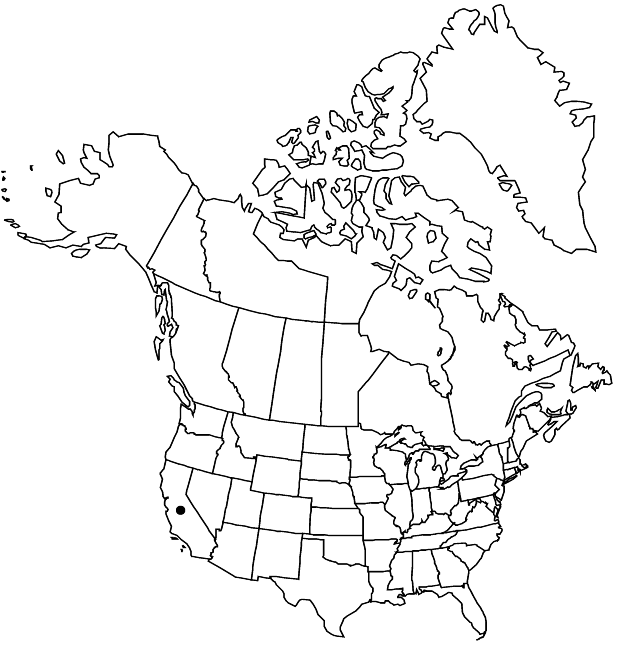Arctostaphylos mewukka
Proc. Biol. Soc. Wash. 31: 101, plates 2, 3. 1918 ,.
Shrubs, erect, 1–3 m; burl present or absent; twigs glabrous or slightly hairy and sparsely glandular. Leaves: petiole 6–15 mm; blade intensely gray- or white-glaucous, dull, orbiculate, orbiculate-ovate, oblong-ovate, or lanceolate-ovate, 3–7 × 2–7 cm, base rounded, margins entire, plane, apex acute or obtuse, surfaces smooth, glabrous. Inflorescences panicles, 2–7-branched; immature inflorescence pendent, axis 2–3 cm, 1+ mm diam., glabrous or slightly hairy, sometimes glandular; bracts tightly appressed, scalelike, deltate to linear-lanceolate, 3–6 mm, apex acute or acuminate, surfaces glabrous. Pedicels 4–8 mm, glabrous. Flowers: corolla white, conic to urceolate; ovary glabrous. Fruits (dark mahogany-brown), globose, 12–16 mm diam., glabrous. Stones distinct, sometimes connate.
Discussion
Subspecies 2 (2 in the flora).
Arctostaphylos mewukka is found on the western slopes of the central and northern Sierra Nevada.
Selected References
None.
Key
| 1 | Burls present; leaf blades 2-4 cm wide, apex acute. | Arctostaphylos mewukka subsp. mewukka |
| 1 | Burls absent; leaf blades 4-7 cm wide, apex obtuse. | Arctostaphylos mewukka subsp. truei |
